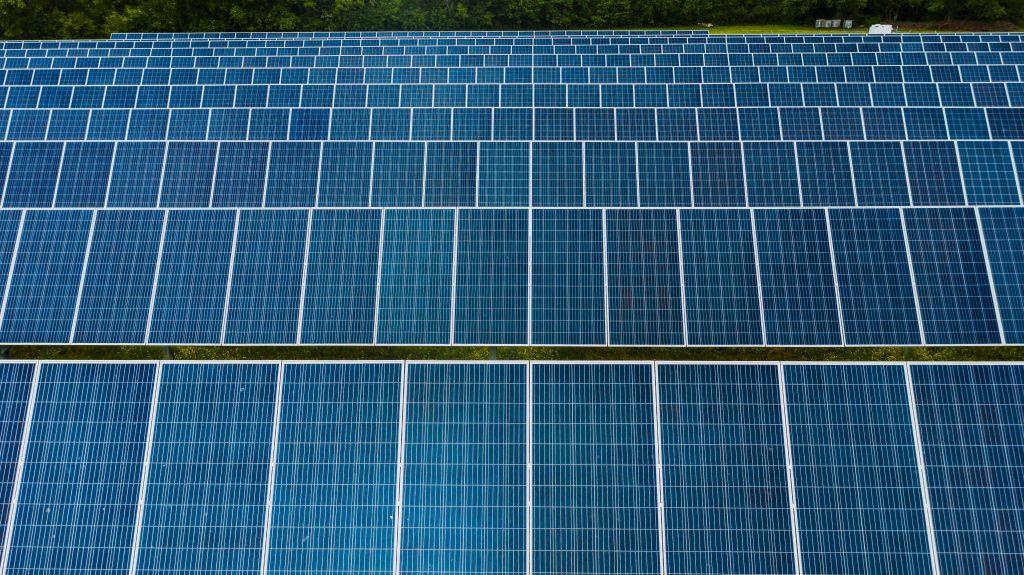The Infinite Source of Energy
Photovoltaic (PV) systems are considered to be the fastest-growing power technology due to their cost reduction and increasing need for sustainable power supply (Rowe, 2014). Every hour we receive more energy from the sun than we use in a year. With 430 exajoules (EJ) received to 410 EJ used. Nature has been using this “infinite” source of energy for billions of years. We are finally tapping into this source through the use of solar photovoltaic (PV) cells.
In 2010, solar photovoltaic capacity reached 40 gigawatts (GW). That number has skyrocketed to almost 630 GW in 2020. In 2019 alone, the solar PV capacity increased by 115GW.

This shift towards renewable energy is not limited to solar energy. Other forms of renewable sources are replacing traditional sources of energy. While it will be years before our reliance on coal and oil ends, this decade could be the beginning of that end. In the last 10 years, the renewable energy market has quadrupled, going up from 414GW in 2010 to 1,650GW in 2020.
World Leaders in Solar PV

Global solar PV capacity is estimated to more than double over the next decade – from about 500GW in 2018 to 1,290GW in 2030. China’s meteoric rise in the solar energy industry has seen it go from 0 to 205GW of PV in 20 years. That is 35% of the global total. China aims to add 65GW of PV each year from 2021 to 2025 to make the nation carbon-neutral by 2060.
Other countries lag far behind China in numbers. The United States has 62.30GW, with India having 35.06, UK 13.40GW, and mainland Europe having 146.57GW. Australia’s PV per capita of 664 watts per person is the highest in the world. In 2010, Australia generated 0.163GW of solar energy. In 10 years following that, its capacity is 18.5GW.
Importance of Distributed Solar PV
Distributed solar PV is classified into four categories; residential, industrial, commercial, and off-grid applications. They have been growing swiftly in the United States of America, Europe, China, and Japan mainly due to the cost reduction of around 60-80% since 2010. This led to the economic attractiveness of solar PV.

Therefore, by 2024, distributed solar PV is estimated to grow over 317GW to reach 530GW. To which commercial and industrial solar PV is expected to account for close to 70% of the growth, around 377GW IEA (2019).
Beginning of a New Era
Over 80% of energy still comes from non-renewable sources such as oil and coal. But the last decade could be the dawn of a new era in energy. After all, we have seen solar PV prices fall by 82% in the 2010s, making green energy cheaper than ever.
All the trends point in one direction. That renewables are the future source of our energy and solar energy could be the energy of the future. In fact, U.S. Energy Information Administration projects that renewables will generate half of the world’s electricity by 2050.

The International Renewable Energy Agency (IRENA) projection shows that renewables would only account for 25% of the global share by 2050. This is only if countries stick to their current climate change plans. But, if countries adopt goals set by the Paris Agreement, the figure would rise to 65% (IRENA, 2018).
Challenges
Despite the promise of cleaner energy, there are two key challenges we need to overcome before we can create our solar future – efficiency and weather.
Currently, most of the solar panels in the industry are, on average, 15-20% efficient. That is a lot of wasted potential. A 2018 research group developed a solar cell with an efficiency of 47.1% (Geisz, et al., 2018). Although encouraging, we need to do much more to make them commercially viable.
Another challenge is the weather. PVs generate energy only during sunny days. In any other weather, PVs are next to useless. Therefore, an efficient storage system is necessary if we want to use solar energy reliably. We could subvert dependence on weather by building a Dyson sphere, but that technology is a long, long time away.
Conclusion
Over the past decade, solar PV installations have seen a substantial rise in global deployment. That is not to say there were no roadblocks. But, we are finding ways to make PVs more efficient and exploring better energy storage methods. If the last decade was any indicator, then the world is looking towards renewables and solar energy as the energy of the future.
Research and Development teams are doing their part. Governments are doing their part. Now, it is time for us to do ours. We need to know which businesses are working towards a greener future and which are not. To know that, we need a tool that can measure the social and environmental impacts of businesses. Here at THRIVE Project, we aim to do just that. Join us as we work towards a more sustainable future.























